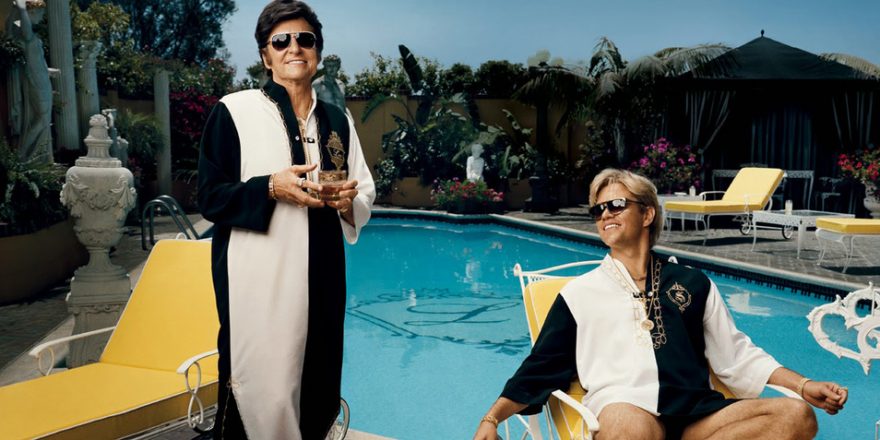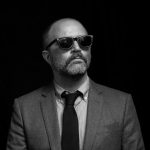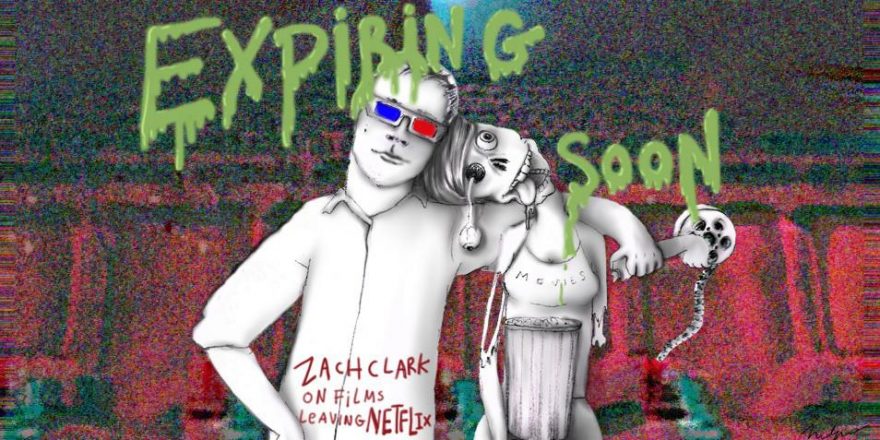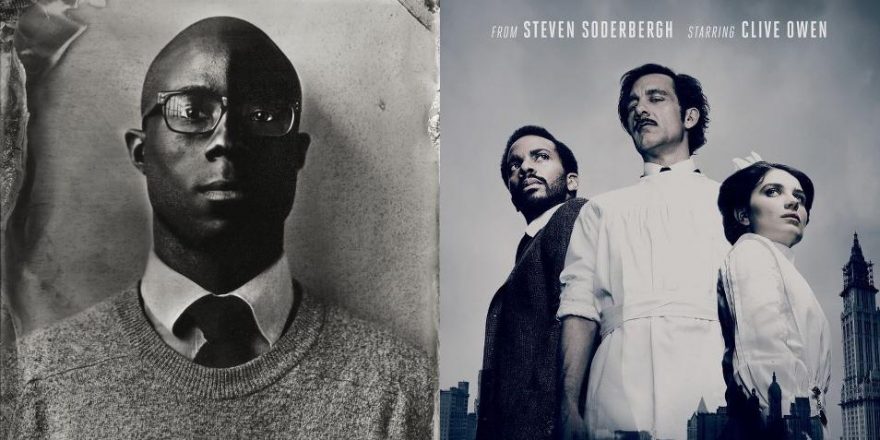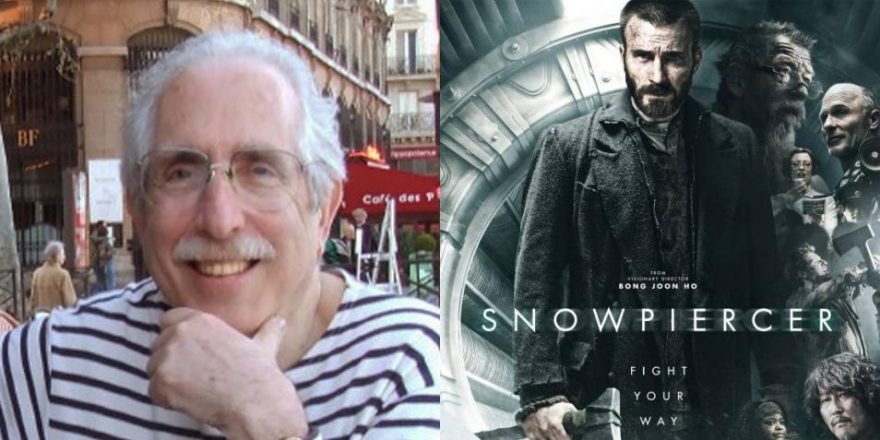“We are better able to enjoy a fantasy as a fantasy when it is not our own.” – Susan Sontag, Notes on Camp
Last year I went to Las Vegas for the first time to accomplish another first: meeting the father of my girlfriend, after being in a relationship with her for almost six years. I had always wanted to go to Las Vegas because I was in love with the mythology of the city – a metropolis built from scratch by gangsters, a temple of kitsch, a paean to debauchery – or, as Jen’s dad put it, “America’s #1 adult playground.” As a teenager, Vegas first piqued my interest because that’s where Elvis transformed his image from the leather-clad good ol’ boy of the ’68 Comeback Special into a glitter-caked, cape-wearing God of stage and spectacle, and soon after that, a drug-addled, bloated parody thereof. Seeing Terry Gilliam’s film of Hunter S. Thompson’s Fear and Loathing in Las Vegas in the theater at age 16 sealed the deal, making Vegas the only place a kitsch-obsessed adolescent like myself could truly call home. When a class assignment required us to write our own autobiography and project our lives into the future, I imagined myself living in Sin City, wearing a leopard-print suit (years before I saw Fassbinder don such an outfit in Kamikaze ’89) and directing a movie about giant leeches. Ah, the dreams of youth!
But those dreams died the day the Liberace Museum closed down. Like Elvis, Liberace was the surviving half of a set of twins, born into a low-income working-class family. He was both blessed and cursed with an enormous, inborn musical ability, which once discovered, brought him an unprecedented amount of fame and fortune. There are two kinds of rich people, the “born rich” and the “got rich,” and as members of the latter category both Elvis and Liberace used their vast earnings to create an elaborate, burlesque dream of wealthy living, where glitz and glamour were priority numero uno and taste was always an afterthought. The Liberace Museum, where the famous pianists’ jewel-encrusted pianos, elaborate costumes and other gaudy possessions were housed, became the focal point of my planned pilgrimage to Vegas. During college and a couple years after, I made two sojourns to Memphis to visit Graceland; a trip to the Liberace Museum was the natural companion piece, but finances and scheduling kept a Vegas vacation at bay. When I heard it had shut its doors indefinitely in October 2010, my interest is traveling all the way across the country just to look at casinos and spend $10 on slot machines significantly waned.
When I heard Steven Soderbergh was planning to make a Liberace biopic (of sorts) as his first post-“retirement” project, it instantly became my most anticipated movie of the decade to date. Made for HBO, Behind the Candelabra tells all about the strange, sad six-year relationship between Liberace and Scott Thorson, which starts in a fever of May-December passion, progresses into pre-Genesis P-Orridge partner-replicating plastic surgery, and ends with a lawsuit and the Great Entertainer’s fall from grace as his death from AIDS goes from poorly guarded secret to prime tabloid fodder. It was among my favorite films of 2013, and its prurient shocks and sincerely earned pathos are no less impactful three years later. Behind the Candelabra goes for broke when it comes to the gauche, full-of-drugs, sweaty, cross-generational sex, the graphic surgery footage, bedazzled speedos, puke, more drugs, and more sex. This is the stuff of camp classics. The direct depiction of plastic surgery is the shock-value cornerstone of trashterpieces like Doris Wishman’s jaw-dropping transgender exposé Let Me Die a Woman and the forgotten Liz Taylor-Helmut Berger melodrama Ash Wednesday. As Liberace, Michael Douglas chews all the scenery he can get his hands on, but the real scene-stealer here is Rob Lowe as Liberace’s plastic surgeon, a doped-up, leathery monster who elicits laughs mostly from Soderbergh’s refusal to cut away from him until at least two or three beats after he’s finished talking. Somehow, almost miraculously, under Soderbergh’s usual knowing distance from his characters, this film about overindulgence never really feels indulgent itself. I’m reminded of a phrase I think about often, from Roger Ebert’s review of Evil Dead 2: Dead by Dawn: “Level One viewers will say it’s in bad taste. Level Two folks … will perceive that it is about bad taste.” Candelabra is a horror movie of sorts, too, a nightmare portrait of domesticity gone terribly, irreparably off the rails. “’Disgusting,’” Douglas/Liberace snidely whines to Matt Damon’s Thorson while attempting to coax him into the receiving end of anal sex, “is in the eyes of the disgust-ee.” Amen.
Filmed almost a quarter century before the events of Behind the Candelabra, Liberace’s Christmas Special is an apropos companion piece to Soderbergh’s film. On the surface, it’s pretty harmless fluff. But it’s worth noting that while the centerpiece of this 30-minute episode of the pianist’s TV show features him delivering an earnest retelling of the birth of the Christ Child to a plastic star, it begins with him playing God. As Liberace welcomes the audience to this very special evening, he laments how Hollywood holidays are so unlike the snow-draped Decembers of his Wisconsin childhood. He has the solution, however, and with a few tinklings of the ivories, he magically opens the curtains, makes snow fall, and materializes a lush Christmas tree and three violinists. Liberace’s magic can turn his black piano white, and turn night into day. All this while looking the audience dead in the eye and winking, always winking. (“I was the first person on television to look directly into the camera,” Douglas’ Liberace informs us in Candelabra.) These secret glances are echoed in Soderbergh’s film, as Douglas is seen repeatedly to carry on one conversation with his mouth while having a distinctly separate one with his eyes. These coded looks are a staple of early queer representations in cinema, most beautifully delineated in Mark Rappaport’s video essay Rock Hudson’s Home Movies. But in Liberace’s hands they take on a slightly larger meaning. Like every great religion, Liberace simultaneously makes us feel like we’re being let in on a secret while asking us to believe in the impossible. And as the Christian God created man in His image, so Liberace sought to turn his most devoted follower, Scott Thorson, into an echo of himself.
While in Vegas last year, I made it my mission to find whatever traces of Liberace’s legacy were left. The pickings were slim, but I was told by someone that one of his cars was on view in the lobby of a restaurant on the Strip known for its elaborate chandeliers. Jen and I made it a special trip but the car was nowhere in sight; we asked around and ascertained that it used to be located where there was now a glittery chair in the shape of a high-heel, surrounded by tourists waiting to take selfies with it. Like New York, Las Vegas is a city dead-set on destroying everything that was once interesting and unique about it, bulldozing the way for ever exponentially larger and homogenized corporate interests to take over. It’s a ghost town overflowing with people. I appreciated my time there, but upon leaving felt confident that I never needed to return. That is, until I learned very recently that they’ve just opened up “Liberace Garage,” with a small selection of cars and costumes on display.
Behind the Candelabra expires on Amazon Prime on Saturday, May 21.
Liberace’s Christmas Special is streaming now on Amazon Prime.
The Ballad of Genesis and Lady Jaye and Let Me Die a Woman are available to stream on Fandor.


